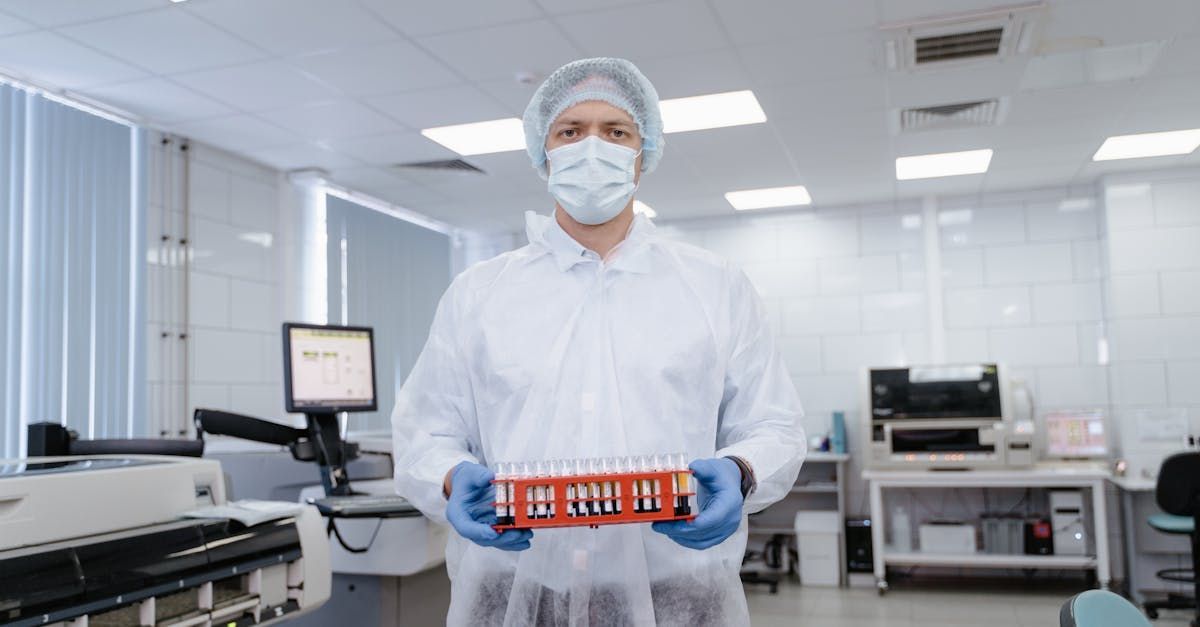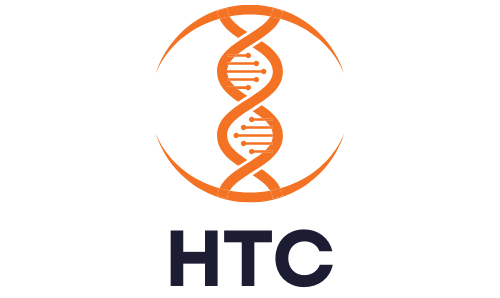HealthTech ETFs: A Guide for Investors
In today's rapidly evolving financial landscape, HealthTech ETFs (Exchange-Traded Funds) have emerged as a compelling investment vehicle for those looking to capitalize on the intersection of healthcare and technology. HealthTech ETFs are designed to track the performance of companies involved in innovative healthcare technologies, ranging from digital health platforms and telemedicine services to biotechnology advancements and wearable health devices. These funds offer investors a diversified portfolio, reducing risk while providing exposure to cutting-edge sectors that are transforming the healthcare industry.
The importance of HealthTech cannot be overstated. As the world continues to grapple with global health challenges and an aging population, the demand for innovative healthcare solutions is on the rise. HealthTech companies are at the forefront of addressing these needs, developing technologies that enhance patient care, improve diagnostic accuracy, and streamline healthcare delivery. This growing reliance on technology in healthcare has made HealthTech a vital area for investors seeking growth opportunities in the modern market.
This blog aims to serve as a comprehensive guide for investors interested in HealthTech ETFs. We will explore the basics of HealthTech ETFs, the benefits and risks associated with investing in them, and provide insights into key considerations for building a robust HealthTech investment portfolio. Whether you are a seasoned investor or new to the world of ETFs, this guide will equip you with the knowledge needed to make informed investment decisions in the dynamic HealthTech sector.
Understanding HealthTech ETFs
Exchange-Traded Funds (ETFs) are investment funds traded on stock exchanges, much like individual stocks. They hold a diversified portfolio of assets, such as stocks, bonds, or commodities, and are designed to track the performance of a specific index or sector. ETFs offer several advantages, including liquidity, cost-efficiency, and the ability to invest in a broad market segment without the need to buy individual stocks.
ETFs are structured to provide investors with the best of both worlds: the diversification of mutual funds and the flexibility of stock trading. They can be bought and sold throughout the trading day at market prices, unlike mutual funds, which are priced only at the end of the trading day. This intraday trading capability makes ETFs a popular choice for investors seeking both diversification and flexibility.
Specific Focus on HealthTech ETFs: What They Include and Exclude
HealthTech ETFs are a subset of sector-specific ETFs that focus on companies operating at the intersection of healthcare and technology. These ETFs typically include:
- Digital Health Platforms: Companies providing telemedicine, electronic health records (EHRs), and mobile health applications.
- Biotechnology Firms: Companies involved in genetic engineering, molecular diagnostics, and drug development.
- Medical Device Manufacturers: Firms producing innovative medical devices and equipment.
- Health Informatics: Companies specializing in healthcare data analytics, health information systems, and AI-driven diagnostics.
- Wearable Technology: Companies developing wearable devices that monitor health metrics such as heart rate, sleep patterns, and physical activity.
HealthTech ETFs generally exclude companies that are primarily involved in traditional pharmaceuticals, medical services without a technological component, and general healthcare providers. This focused approach allows investors to specifically target the technological advancements reshaping the healthcare landscape.
Differences Between HealthTech ETFs and Other Healthcare-Related ETFs
While HealthTech ETFs concentrate on the technological innovations within the healthcare sector, other healthcare-related ETFs might have a broader or different focus. Here are some key distinctions:
- Biotechnology ETFs: These funds focus exclusively on biotech companies involved in drug discovery, genetic research, and molecular biology. While there is overlap with HealthTech ETFs, biotech ETFs do not typically include companies outside of drug development and genetic engineering.
- Pharmaceutical ETFs: These ETFs invest in companies that manufacture and sell medications. They often focus on larger, established pharmaceutical companies and exclude smaller, innovative HealthTech firms.
- Healthcare Sector ETFs: These funds provide exposure to the entire healthcare sector, including pharmaceuticals, healthcare providers, medical equipment manufacturers, and health insurers. They offer broad diversification but may not focus specifically on technological innovations.
- Medical Device ETFs: These ETFs target companies that produce medical devices and equipment. While there is some overlap with HealthTech ETFs, they may not include firms focused on digital health or health informatics.
By understanding these distinctions, investors can make more informed decisions about where to allocate their resources based on their investment goals and risk tolerance. HealthTech ETFs offer a unique opportunity to invest in the future of healthcare technology, providing a focused approach to capturing growth in this dynamic sector.
Benefits of Investing in HealthTech ETFs
Diversification: Spreading Risk Across Multiple Companies
One of the primary benefits of investing in HealthTech ETFs is the diversification they offer. By investing in a single ETF, investors gain exposure to a wide range of companies within the HealthTech sector. This diversification spreads risk across multiple entities, reducing the impact of poor performance by any single company. For example, if a particular digital health platform faces setbacks, the ETF’s performance may still remain robust due to the strength of other holdings in areas like biotechnology or wearable technology. This risk mitigation is a key advantage, providing a buffer against volatility inherent in individual stocks.
Exposure to Innovation and Cutting-Edge Technologies
HealthTech ETFs provide investors with direct exposure to the forefront of healthcare innovation. The companies included in these ETFs are often leaders in developing and implementing new technologies that have the potential to revolutionize patient care and healthcare delivery. By investing in HealthTech ETFs, investors support and benefit from advancements in areas such as telemedicine, AI-driven diagnostics, and genomic research. This exposure not only aligns investors with future growth trends but also positions them to capitalize on breakthroughs that can lead to substantial market gains.
Potential for High Returns in a Growing Sector
The HealthTech sector is poised for significant growth, driven by increasing demand for advanced healthcare solutions and technological innovation. As healthcare systems worldwide strive to improve efficiency, reduce costs, and enhance patient outcomes, companies at the intersection of health and technology are seeing rapid adoption and expansion. HealthTech ETFs offer the potential for high returns by capturing this growth trajectory. The increasing integration of technology in healthcare, coupled with a strong emphasis on precision medicine, digital health, and personalized care, creates a fertile ground for investment opportunities. By investing in HealthTech ETFs, investors can tap into this growth potential and enjoy the financial rewards of being part of a burgeoning sector.
In summary, HealthTech ETFs offer a compelling investment opportunity through diversification, exposure to groundbreaking innovations, and the potential for high returns in a growing industry. As the healthcare landscape continues to evolve, these ETFs provide a strategic way for investors to participate in the future of healthcare technology.
Key HealthTech ETFs to Consider
Overview of Popular HealthTech ETFs
Investors interested in HealthTech ETFs have several compelling options to choose from. Here, we provide an overview of some of the most popular HealthTech ETFs:
- ARK Genomic Revolution ETF (ARKG) The ARK Genomic Revolution ETF focuses on companies involved in the genomics and biotechnology sectors. This ETF invests in companies that are likely to benefit from advancements in gene editing, DNA sequencing, and personalized medicine.
- Global X Telemedicine & Digital Health ETF (EDOC) The Global X Telemedicine & Digital Health ETF targets companies that are leading the way in telemedicine and digital health. This includes firms offering telehealth services, healthcare information systems, and remote patient monitoring solutions.
- iShares U.S. Medical Devices ETF (IHI) The iShares U.S. Medical Devices ETF invests in companies that manufacture and distribute medical devices and equipment. This ETF provides exposure to the medical devices sector, which is a key component of HealthTech.
- SPDR S&P Health Care Equipment ETF (XHE) The SPDR S&P Health Care Equipment ETF focuses on companies in the health care equipment and supplies industry. It includes firms that produce advanced medical technologies and devices.
Analysis of the Top Holdings Within These ETFs
ARK Genomic Revolution ETF (ARKG)
- CRISPR Therapeutics (CRSP): A leader in gene editing technology, CRISPR Therapeutics is pioneering the development of CRISPR/Cas9-based therapeutics for serious diseases.
- Teladoc Health (TDOC): A key player in the telemedicine space, Teladoc Health provides virtual healthcare services, allowing patients to consult with doctors remotely.
- Editas Medicine (EDIT): Another prominent gene editing company, Editas Medicine focuses on developing transformative genomic medicines to treat a range of serious diseases.
Global X Telemedicine & Digital Health ETF (EDOC)
- Teladoc Health (TDOC): As mentioned, Teladoc Health is a major component of this ETF, underscoring its importance in the digital health landscape.
- Ping An Healthcare (1833.HK): This Chinese company offers a comprehensive range of online healthcare services, including consultations, health management, and wellness programs.
- Veeva Systems (VEEV): Veeva Systems specializes in cloud-based software for the life sciences industry, providing solutions for regulatory compliance and clinical data management.
iShares U.S. Medical Devices ETF (IHI)
- Abbott Laboratories (ABT): A global healthcare leader, Abbott Laboratories produces a wide range of medical devices, diagnostics, and nutritional products.
- Medtronic (MDT): Medtronic is one of the largest medical device companies in the world, known for its innovative products in cardiovascular, diabetes, and neurology.
- Thermo Fisher Scientific (TMO): This company provides essential tools and technologies for scientific research, including diagnostic tests and laboratory equipment.
SPDR S&P Health Care Equipment ETF (XHE)
- Abbott Laboratories (ABT): As with the iShares ETF, Abbott Laboratories is a significant holding, highlighting its dominance in the medical devices field.
- Boston Scientific (BSX): Boston Scientific develops a variety of medical solutions for interventional medical specialties, including cardiology and neurology.
- Intuitive Surgical (ISRG): Known for its robotic-assisted surgical systems, Intuitive Surgical is revolutionizing minimally invasive surgery with its da Vinci systems.
In conclusion, investing in HealthTech ETFs offers a strategic way to gain exposure to the rapidly growing and innovative healthcare technology sector. By understanding the composition, performance, and key holdings of various HealthTech ETFs, investors can make informed decisions to align their portfolios with the future of healthcare.
Factors to Consider Before Investing
Market Trends and Future Outlook for HealthTech
The HealthTech sector is characterized by rapid innovation and significant growth potential. Key trends driving this market include the increasing adoption of digital health solutions, advancements in genomic medicine, the proliferation of wearable health devices, and the integration of artificial intelligence in healthcare.
Telemedicine and Digital Health: The COVID-19 pandemic accelerated the adoption of telemedicine and digital health platforms, making them essential components of modern healthcare. This trend is expected to continue as patients and providers recognize the convenience and efficiency of remote healthcare services.
Genomics and Personalized Medicine: Advances in genomic sequencing and personalized medicine are revolutionizing the treatment of diseases. These technologies enable more accurate diagnoses and tailored treatments, which can improve patient outcomes and reduce healthcare costs.
Wearable Health Devices: The market for wearable health devices, such as fitness trackers and smartwatches, is expanding rapidly. These devices provide real-time health data, empowering individuals to monitor and manage their health proactively.
Artificial Intelligence: AI is being increasingly integrated into healthcare for tasks such as predictive analytics, diagnostic imaging, and personalized treatment plans. The ability of AI to analyze vast amounts of data quickly and accurately is transforming healthcare delivery.
Investors should keep an eye on these trends and consider how they might influence the performance of HealthTech ETFs. Staying informed about the latest developments and future outlook of the HealthTech sector can help investors make strategic decisions.
ETF Expense Ratios and Fees
Expense ratios and fees are critical factors to consider when evaluating HealthTech ETFs. The expense ratio represents the annual cost of owning the ETF, expressed as a percentage of the investment. Lower expense ratios are generally more favorable, as they reduce the overall cost of the investment and can enhance returns over time.
For example, the iShares U.S. Medical Devices ETF (IHI) has a relatively low expense ratio of 0.43%, making it an attractive option for cost-conscious investors. In contrast, the ARK Genomic Revolution ETF (ARKG) has a higher expense ratio of 0.75%, which reflects the active management and specialized focus of the fund.
It's important to compare the expense ratios of different HealthTech ETFs and weigh them against other factors, such as the fund's performance, holdings, and investment strategy. While lower fees are preferable, they should not be the sole criterion for selecting an ETF.
The Importance of Understanding Underlying Assets and Their Performance
Investors should thoroughly understand the underlying assets of a HealthTech ETF and assess their performance. This involves examining the fund's holdings, the sectors and industries it covers, and the individual companies included in the portfolio.
Holdings Analysis: Reviewing the top holdings of an ETF provides insight into its investment focus and risk exposure. For example, an ETF heavily weighted towards biotechnology firms might be more volatile but offer higher growth potential compared to one focused on established medical device companies.
Sector and Industry Coverage: Different HealthTech ETFs may emphasize various sub-sectors, such as telemedicine, genomics, or medical devices. Understanding the specific areas covered by an ETF helps investors align their investments with their interests and risk tolerance.
Performance Evaluation: Analyzing the historical performance of an ETF and its underlying assets can provide valuable information about its potential future returns. Look at the fund's performance over different time periods, compare it with benchmarks, and consider how it has performed in various market conditions.
In conclusion, investing in HealthTech ETFs requires careful consideration of market trends, expense ratios, and the performance of underlying assets. By evaluating these factors, investors can make informed decisions and position themselves to benefit from the growth and innovation in the HealthTech sector.
How to Invest in HealthTech ETFs
Steps to Start Investing: Opening a Brokerage Account, Choosing the Right Platform
Opening a Brokerage Account To start investing in HealthTech ETFs, the first step is to open a brokerage account. Here’s how to get started:
- Research Brokerage Firms: Look for a reputable brokerage firm that offers a wide range of ETF options, competitive fees, and robust customer service. Popular online brokers include Charles Schwab, Fidelity, and Robinhood.
- Create an Account: Visit the brokerage firm’s website and follow the steps to create an account. You will need to provide personal information, such as your name, address, and Social Security number.
- Fund Your Account: Once your account is set up, you’ll need to deposit funds. This can be done via bank transfer, check, or other methods offered by the brokerage.
Choosing the Right Platform Selecting the right investment platform is crucial for managing your investments efficiently. Consider the following factors:
- User Interface: Choose a platform with an intuitive and user-friendly interface, especially if you are a beginner.
- Research Tools: Ensure the platform provides robust research tools, including market analysis, news updates, and performance tracking.
- Fees and Commissions: Compare fees and commissions across different platforms. Some brokers offer commission-free trading on ETFs.
- Customer Support: Opt for a platform with reliable customer support to assist with any issues or questions.
Tips for Beginners: Setting Investment Goals, Understanding Risk Tolerance
Setting Investment Goals Before investing, it’s important to define your investment goals. Ask yourself the following questions:
- What are your financial objectives? Are you saving for retirement, a major purchase, or simply looking to grow your wealth?
- What is your investment timeline? Are you planning to invest for the short term or long term? Longer investment horizons typically allow for more aggressive strategies.
- How much can you invest? Determine how much money you can allocate to HealthTech ETFs without compromising your financial stability.
Understanding Risk Tolerance Your risk tolerance is the degree of variability in investment returns you are willing to withstand. Consider the following:
- Risk Assessment: Assess your comfort level with market fluctuations. Are you willing to take on higher risk for potentially higher returns, or do you prefer a more conservative approach?
- Diversification: Diversifying your portfolio can help manage risk. HealthTech ETFs themselves offer diversification within the HealthTech sector, but consider balancing your overall portfolio with investments in other sectors.
Long-Term vs. Short-Term Investment Strategies
Long-Term Investment Strategies Long-term investing involves holding investments for several years, allowing them to grow over time. Benefits include:
- Compounding Returns: The power of compounding can significantly increase your investment value over the long term.
- Reduced Impact of Volatility: Long-term investments can weather market fluctuations and economic cycles better than short-term investments.
- Lower Taxes: Long-term capital gains are usually taxed at a lower rate than short-term gains.
When employing a long-term strategy for HealthTech ETFs:
- Focus on Growth Potential: Invest in ETFs with strong growth potential in the HealthTech sector.
- Regular Contributions: Consider making regular contributions to your investment, such as monthly or quarterly, to take advantage of dollar-cost averaging.
Short-Term Investment Strategies Short-term investing involves buying and selling investments within a shorter timeframe, ranging from a few months to a couple of years. Considerations include:
- Higher Volatility: Short-term investments can be more volatile and require active management.
- Market Timing: Success in short-term investing often depends on accurately timing the market, which can be challenging.
- Higher Taxes: Short-term capital gains are taxed at a higher rate than long-term gains.
When employing a short-term strategy for HealthTech ETFs:
- Stay Informed: Keep up with market trends and news that can impact the HealthTech sector.
- Set Clear Exit Points: Determine your target profit levels and stop-loss limits to manage risk effectively.
- Be Prepared to Act: Short-term investing may require quick decision-making to capitalize on market opportunities.
In conclusion, investing in HealthTech ETFs involves understanding market trends, evaluating expense ratios, and analyzing underlying assets. By setting clear investment goals, understanding your risk tolerance, and choosing the appropriate investment strategy, you can navigate the dynamic HealthTech sector and potentially achieve your financial objectives. Whether you are a long-term investor seeking growth or a short-term trader looking for quick gains, HealthTech ETFs offer a versatile and promising investment avenue.
Risks and Challenges
Volatility and Market Fluctuations
HealthTech ETFs, like all investments, are subject to market volatility and fluctuations. The HealthTech sector, in particular, can be highly volatile due to its reliance on innovation and emerging technologies. Factors that contribute to this volatility include:
- Innovation Risks: HealthTech companies often invest heavily in research and development. While this can lead to significant breakthroughs, it can also result in failures or delays that negatively impact stock prices.
- Market Sentiment: The HealthTech sector can be sensitive to changes in market sentiment. News about regulatory approvals, technological advancements, or high-profile failures can lead to swift price movements.
- Economic Conditions: Broader economic conditions, such as interest rates, inflation, and economic growth, can also affect the performance of HealthTech ETFs. During economic downturns, investors may become risk-averse, leading to reduced investment in high-growth sectors like HealthTech.
Regulatory and Ethical Considerations in HealthTech
The HealthTech sector is subject to stringent regulatory oversight and ethical considerations, which can pose risks and challenges for investors:
- Regulatory Approvals: Many HealthTech companies need to obtain regulatory approvals for their products and technologies. The approval process can be lengthy, uncertain, and costly. Delays or rejections can significantly impact the financial performance of these companies.
- Compliance Costs: Ensuring compliance with regulatory standards can be expensive. HealthTech companies must invest in quality control, clinical trials, and regulatory documentation, which can strain their financial resources.
- Ethical Concerns: Ethical considerations, such as data privacy, patient consent, and the ethical use of AI, are crucial in the HealthTech sector. Public scrutiny and regulatory actions related to these issues can affect the reputation and profitability of HealthTech companies.
The Impact of Technological Advancements and Competition
Technological advancements and competition are inherent aspects of the HealthTech sector, presenting both opportunities and challenges:
- Rapid Technological Change: The fast pace of technological advancements can make it challenging for companies to stay ahead. While innovation drives growth, it also requires continuous investment in R&D. Companies that fail to innovate may lose their competitive edge.
- Competitive Landscape: The HealthTech sector is highly competitive, with numerous companies vying for market share. Intense competition can lead to price wars, reduced profit margins, and increased pressure to continuously innovate.
- Disruption Risks: New technologies can disrupt existing business models. For example, advancements in telemedicine and AI-driven diagnostics may render traditional healthcare delivery methods obsolete. Investors need to monitor technological trends to identify potential disruptors and assess their impact on existing investments.
Notable Labs, a clinical-stage precision oncology company, utilizes its Predictive Precision Medicines Platform (PPMP) to bio-simulate cancer treatments and predict patient responses, enhancing therapeutic precision. This innovative approach positions Notable Labs as a key player in the HealthTech sector, making it an attractive component of HealthTech ETFs for investors seeking exposure to advancements in precision medicine and oncology
Recap of the potential benefits and risks
Investing in HealthTech ETFs presents a unique opportunity to tap into the rapidly evolving intersection of healthcare and technology. Here are the key benefits and risks to consider:
Potential Benefits:
- Diversification: HealthTech ETFs offer exposure to a broad range of companies within the sector, spreading risk across multiple entities.
- Exposure to Innovation: These ETFs include companies at the forefront of healthcare innovation, providing access to cutting-edge technologies and potential growth.
- High Returns: The HealthTech sector’s growth potential can lead to substantial returns, particularly as demand for advanced healthcare solutions continues to rise.
Potential Risks:
- Volatility: The HealthTech sector can be highly volatile, with stock prices influenced by innovation cycles, market sentiment, and economic conditions.
- Regulatory Hurdles: Companies in the HealthTech sector face stringent regulatory requirements, and delays or failures in obtaining approvals can impact financial performance.
- Technological Competition: Rapid technological advancements and intense competition can challenge companies to continually innovate and maintain their market position.
While HealthTech ETFs offer promising investment opportunities, it is crucial for investors to conduct thorough research and due diligence before making any investment decisions. Consider the following steps:
- Understand the Sector: Stay informed about the latest trends, technological advancements, and regulatory changes in the HealthTech sector.
- Analyze ETFs: Compare different HealthTech ETFs based on their holdings, performance, expense ratios, and investment strategies.
- Assess Risk Tolerance: Evaluate your risk tolerance and investment goals to ensure that investing in HealthTech ETFs aligns with your overall financial plan.
- Monitor Investments: Continuously monitor your investments and stay updated on industry developments that could impact the performance of your ETFs.
The future of HealthTech ETFs looks bright as the integration of technology in healthcare continues to accelerate. As we move forward, the demand for innovative healthcare solutions, driven by an aging population and global health challenges, is expected to grow. HealthTech companies are well-positioned to address these needs through advancements in telemedicine, genomics, AI, and wearable health devices.
HealthTech ETFs can play a valuable role in a diversified investment portfolio. They provide exposure to a high-growth sector while offering the benefits of diversification and professional management. For investors seeking to capitalize on the transformative potential of healthcare technology, HealthTech ETFs represent a strategic and promising investment avenue.
In summary, HealthTech ETFs offer a blend of growth potential and diversification, making them an attractive option for forward-thinking investors. By understanding the benefits, risks, and industry dynamics, and by conducting thorough research, investors can make informed decisions and position themselves to benefit from the future of healthcare technology.










